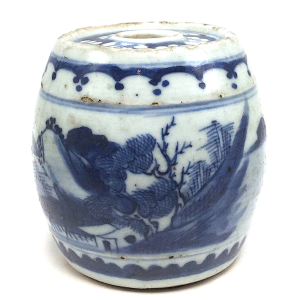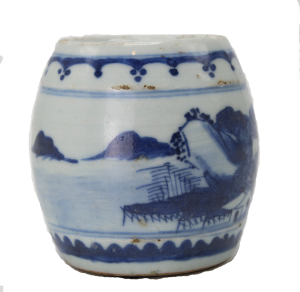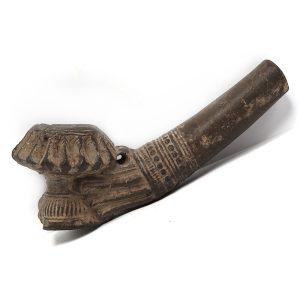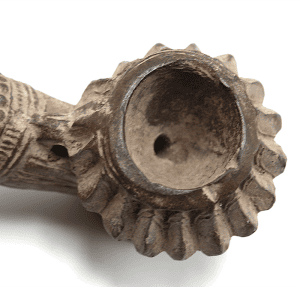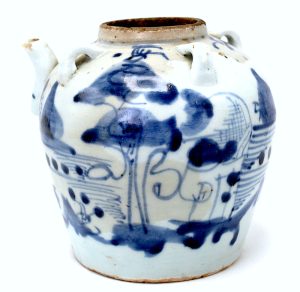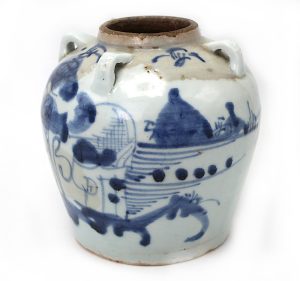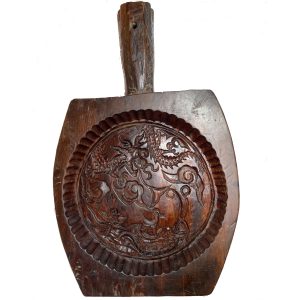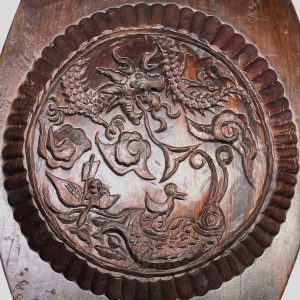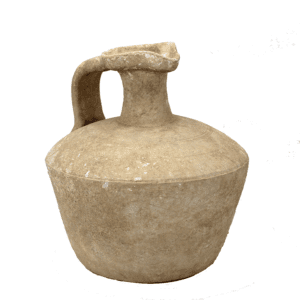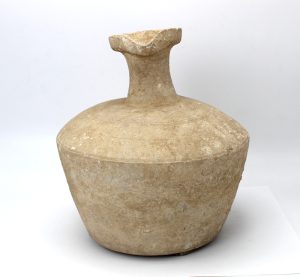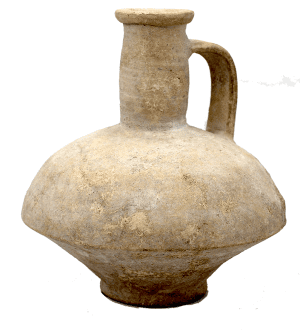-
Sale!


$255.00 Original price was: $255.00.$195.00Current price is: $195.00.
H: 3.25” Dia: 3.25” | FREE SHIPPING WITHIN CONTINENTAL U.S.
With its round body covered with a Chinese village landscape, mountains, seas and calligraphic scholar owner’s name, this ceramic brush holder/paper weight was used a scholar’s desk along with pots, brushes, water droppers, boxes, ink stones and other objects and would be perfect on any style desk.
-
Sale!


$90.00 Original price was: $90.00.$80.00Current price is: $80.00.
H: 1.875” W: 1.75” D: 4” | FREE SHIPPING within continental us.
Mold made with intricate designs, clay earthen ware tobacco/opium pipes were woven into Burmese and Thai Hill Tribe social and cultural traditions. This is a unique gift a pipe smoker, although for decorative purposes only.
-
Sale!


$145.00 Original price was: $145.00.$105.00Current price is: $105.00.
H: 5” W: 5.25” D: 4.5” | FREE SHIPPING within continental US.
Blue and white ceramics like spouted jar with four loops, were used in home kitchens and restaurants to hold oil, sauces, soy or other liquids. Decorated with country scene in a landscape with by tall trees.
-
Sale!


$425.00 Original price was: $425.00.$225.00Current price is: $225.00.
H: 16.5″ W: 10.5″ D: 2.25″ CALL 213-568-3030 OR EMAIL [email protected] FOR SHIPPING QUOTE
This finely detailed hardwood mold was used to make sweetmeats confections, perhaps mooncakes for the Chinese Autumn Moon Festival. It is covered with deeply carved propitious symbols for marital harmony, sons and successful endeavors: a four clawed dragon for fertility, two ducks symbolizing marital bliss and harmony, one atop a carp for conjugal bliss and achieving noble rank and a boat with a sail for making all this easy sailing. This would be a great accessory or gift (especially for weddings) to spice up any kitchen.
-
Sale!


$775.00 Original price was: $775.00.$650.00Current price is: $650.00.
H: 4.5” W: 3” D: 2.75” | SOLD
This Roman ceramic flagon is a uniquely shaped vessel used to store and pour potable liquids. A crème slip carinated jug with a high profile and a trefoil pouring spout, it has a strap handle attached from the carinated edge to just below the rim for easy handling. Roman coarse wars like this were use for liquids and to make offerings to household deities.
-
Sale!


$625.00 Original price was: $625.00.$495.00Current price is: $495.00.
H: 8.5” Dia: 5.5” | SOLD
The shape of this elegant carinated ancient earthenware pouring vessel used to hold and dispense potable liquids: water, wine and other drinks. They were used to hydrate everyone including laborers, field workers, ship-rowers, army personnel and people in their homes and were placed wherever they were needed.
End of content
End of content

